Beautiful and graceful Sea Turtles are often seen on our coastal waters. It is quite a thrill to encounter one of these charming creatures during a dive or snorkel.
They spend their entire lives in the ocean, with the only exception being when females come out to our shores to lay their eggs.
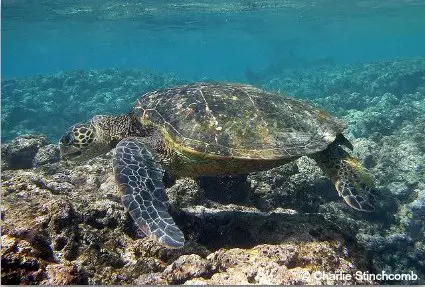
They are quite remarkable creatures, but sadly, all five species found in our shores are either endangered or threatened. It wasn't until recently that sea turtles have come under protection.
There are now a number of Sea Turtle Awareness programs offered by many organizations dedicated to their conservation and I encourage you to check one out to learn more about these beautiful creatures and their many threats.
We recently took part on the one offered by Miami Dade Parks at Crandon Park in Key Biscayne. The kids loved it and we all learned a lot from it, we hope you will too.
- Types of Sea Turtles found in Florida
- Life of a Sea Turtle, some interesting Sea Turtle Facts
- How Sea Turtles Nest
- Our endangered Sea Turtles: Threats to Sea Turtles and ways you can help
- Where and when to see Sea Turtles, Turtle Awareness Programs, Turtle Walks
Types of Sea Turtles found in Florida
Five species of sea turtles are found in Florida:
- The loggerhead sea turtle
- Green sea turtle
- Hawksbill sea turtle
- Leatherback sea turtle
- Kemp's Ridley sea turtle
All five species except for the Loggerhead are federally designated endangered species, the loggerhead sea turtle is considered threatened.
The Loggerhead Sea Turtle
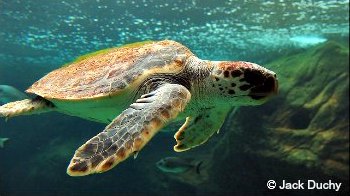
The most common turtle found in Florida's coasts. The broad head and powerful jaws are characteristics of the Loggerheads, hence their name.
They have a reddish-brown shell which often you see covered with barnacles and algae.
They feed on shelled critters like clams and crabs.
Green Sea Turtle
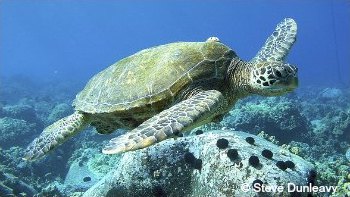
Its name comes from the color of the fat lining the inside of the shell. The shell is oval-shaped without a ridge down the center, the top curves smoothly.
The Green Sea Turtle is omnivorous when young, later in life feed mostly on marine plants.
Hawksbill Sea Turtle
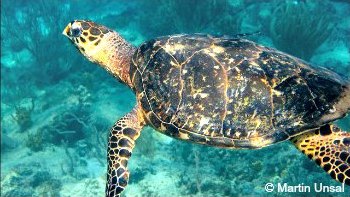
Its snout looks like a hawk's beak and are named for it. On its head it has dark scales with yellow margins. Its shell is heart-shaped with the familiar "tortoise shell" pattern for which it has been harvested mercilessly almost to the point of extinction.
Often seen in the Florida Keys but rarely nests in Florida, preferring Caribbean beaches.
Leatherback Sea Turtle
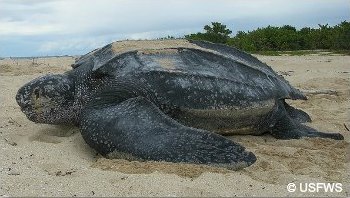
Leatherbacks are the largest of all turtles reaching lengths of 6 feet. Males can reach over 2,000 pounds, females are usually under 1,000 pounds.
Unlike other sea turtles, their shells and heads are not covered with scales and rather than a hard shell they are covered by thick "leathery" skin, generally black
with light blue or white spots.
Kemp's Ridley Sea Turtle
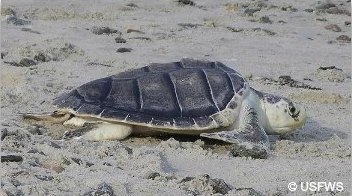
Kemp's Ridleys have a disk-shaped shell and a gray-green body. It is the smallest of all sea turtles.
They feed on small crabs, shrimp and snails.
Facts About Sea Turtles
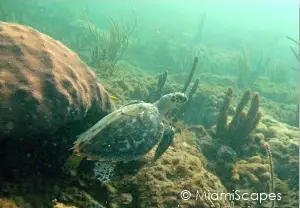
- Sea Turtles are air-breathers but they can stay underwater for long periods of time, sometimes up to five hours.
- Sea turtles have long life spans, average around 50 years reaching sexual maturity at around 20-25 years depending on the species.
- Sea turtles cannot pull their heads and legs inside their shells unlike other turtles to protect themselves from predators.
- They are long range swimmers, some turtles have been found 4,000 miles from their nesting beaches.
- They are great navigators. Despite the long distances they travel, the females always return to the same beach where they were hatched (They must have some sort of built-in GPS system! It is still not known exactly how they do this and more research is still needed)
- Nesting in Florida beaches occurs in the late spring and summer months. See below.
How Sea Turtles Nest
During the summer months if you visit any of our beaches you are likely to see turtle nests that have been marked by conservation groups and volunteers. Please be mindful by staying away.
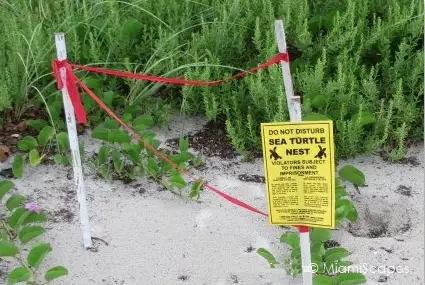
- Loggerheads, green turtles and leatherbacks are found nesting in Florida beaches.
- They nest mainly after dark. Females come ashore and crawl until they find a "suitable" space. They basically want a quiet place where they can lay their eggs undisturbed.
- Once she finds a spot, she uses her flippers to dig a cavity around her.
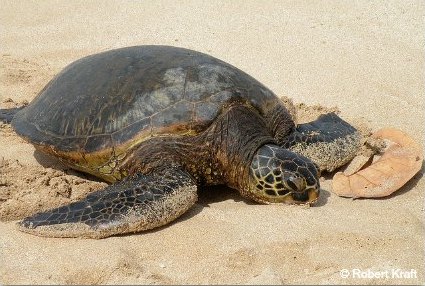
- And then digs a small pit with her rear feet where she will deposit the eggs.
- Up until this time, she might change her mind and go back in the water, but once she starts to lay eggs, there is nothing that will distract her. You can tell she is at this point when she stops moving her flippers and remains still for a few minutes still breathing heavily.
- Sea turtles lay around 100 eggs. The eggs are rubbery, not hard, so they don't break when they fall into the pit. They are about the size of a ping pong ball.
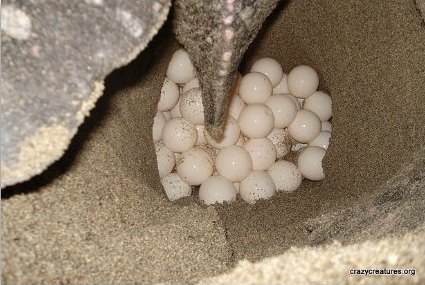
- After she is finished laying the eggs, she covers the pit back with sand and goes back into the water.
- It takes an average of two months for the eggs to hatch depending on the species.
- The sex of the hatchling will be determined by the temperature of the sand. Warmer temperatures produce females, cooler temperatures males, so the eggs laying on top will likely be females (as heat rises, the sand on the surface is warmer than the deeper sand).
- Hatchlings will come out of the nest and head for the brightest horizon into the surf. It is estimated that only one in a thousand
sea turtles makes it to maturity.
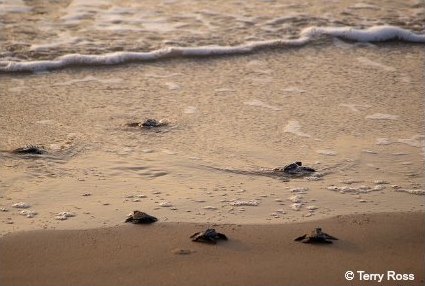
More on our Sea Turtles...
>>Threats to our endangered sea turtles
>>Sea Turtle Awareness Programs, Turtle Walks


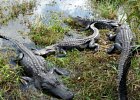
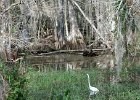
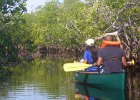
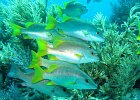
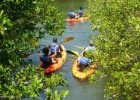


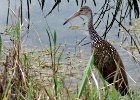





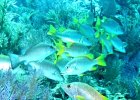

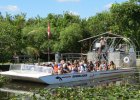






Send a Tip!
Got something to share? Let us know!